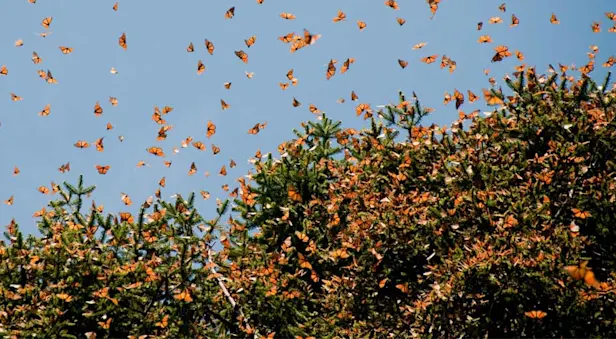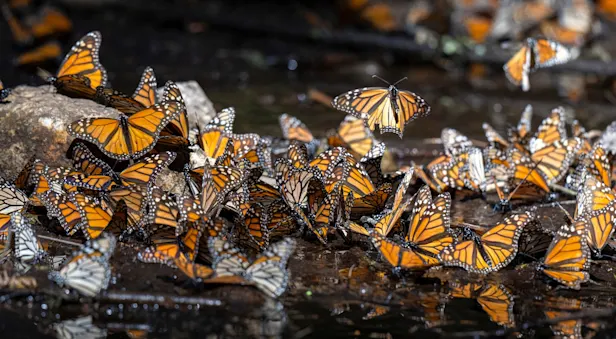
Know Before You Go


The Discovery of the Monarch Butterfly Migration
Lepidopterists, who are concerned with the study of butterflies and moths, have been observing masses of monarch butterflies since the 1850s. However, it was not until 1930 that they were able to deduce with confidence that the butterflies were wintering in the south and migrating north in the spring. The precise location of where these fluttering hoards roosted in winter remained a mystery until a series of explorations led to the uncovering of this entomological Holy Grail.
In 1940, an entomologist from Toronto sought out the wintering site of the monarchs by creating a network of more than 3,000 butterfly enthusiasts across North America. Fred Urquhart, the inspiration behind this project, led this team of thousands, as they tagged monarchs across the continent. Observing the patterns of their movements over the course of each year, Urquhart mapped how the butterflies seemed to be appearing farther and farther south, from Texas to Northern Mexico. Yet his search for the elusive winter home of the monarchs ended in vain.
Kenneth Brugger, an American businessman, read of Urquhart’s findings in 1973 and contacted him about seeing monarchs shower down from the sky during a hail storm in the western mountains near his residence in Mexico City. Urquhart wrote back, encouraging Brugger to investigate the area. Rising to the challenge, Brugger and his wife set out on a two-year expedition in search of the butterfly. On January 2, 1975, while hiking at 10,000 feet in the Trans-Mexican Volcanic Belt, they caught sight of gossamer wings glinting in the sunlight, and suddenly hundreds of millions of monarchs came into view. They had uncovered the ethereal monarch’s wintering site: a patch that measured 20 by 40 miles in the mountainous forest.
The following year, in January of 1976, a prominent entomologist by the name of Lincoln Brower, who had spent more than 20 years studying monarch butterflies, traveled to see their overwintering site for himself. Hiking through the misty, sacred fir forest in Sierra Chincua, Mexico, with his colleagues, Brower recounted, “We walked in along this trail that went down along a ridge for a mile, and we didn’t know exactly where the butterflies were.” Suddenly, each oyamel fir tree was covered in the brilliant orange and white hues of monarch butterflies. “I couldn’t believe the density and numbers,” he recalled. “The next day it warmed up, and when the sun came up, the butterflies were flying all over the place. It was like walking into Chartres Cathedral and seeing light coming through stained-glass windows. This was the eighth wonder of the world.”

































